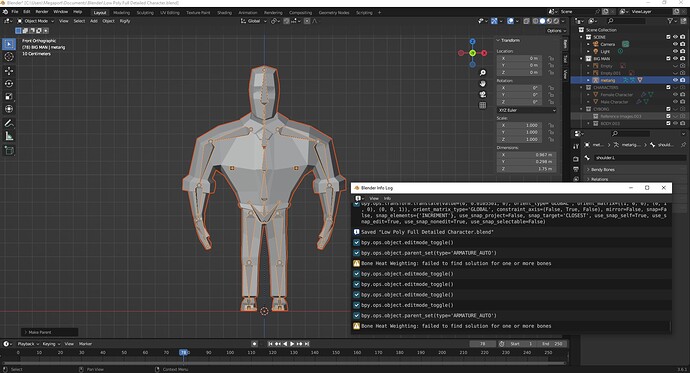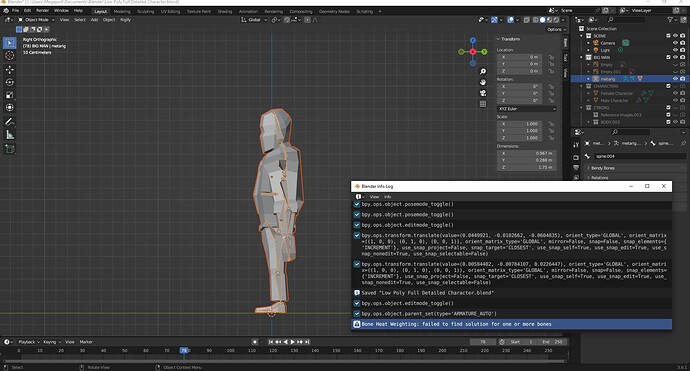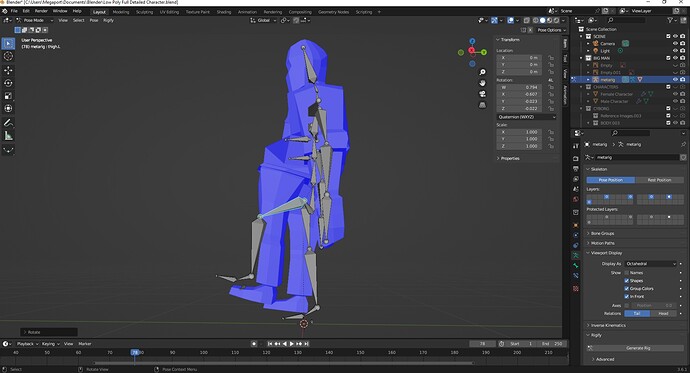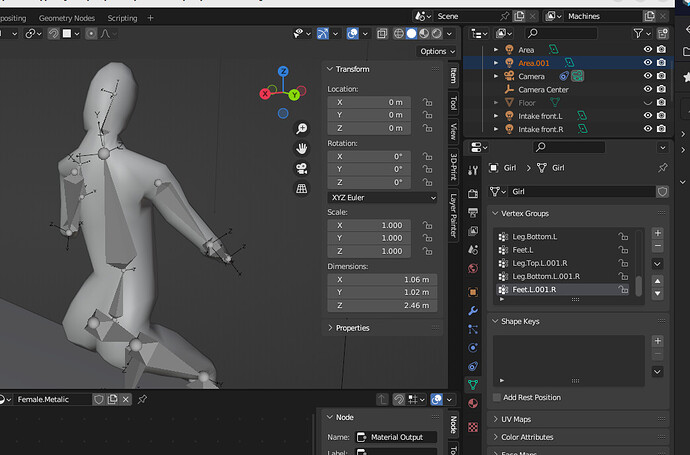Hello everybody, I’m currently following the Low Poly Characters Course and I have some problems in the Rigging section.
When I try to parent the armature with automatic weight, I get the following message : “Bone Heat Weighting: failed to find solution for one or more bones”.
My armature doesn’t connect with my 3D model, even though I merged all vertices by distance, checked the face orientation, applied rotation and scale to my model and the armature.
Thanks in advance for your help! ![]()






![[SOLVED] Bone Heat Weighting failed (Automatic Weights doesn't work in Blender)](https://img.youtube.com/vi/FuiY0wtxdHQ/hqdefault.jpg)

